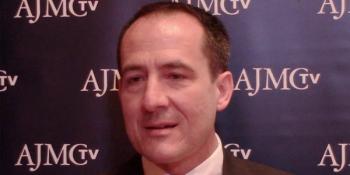
Price shopping for medications within a small geographic area can yield considerable cost savings for uninsured and insured consumers in high-deductible health plans.

Price shopping for medications within a small geographic area can yield considerable cost savings for uninsured and insured consumers in high-deductible health plans.

Retail prices for commonly prescribed drugs are often absent from state prescription drug price websites, but when reported, can vary substantially.

In a survey of patients and visitors to a large academic medical center, middle-income respondents with private insurance reported more cost-related delays in care than those with public insurance.

A discussion at the 2017 American Society of Clinical Oncology Annual Meeting addressed practical solutions to address the financial toxicity of cancer care and identified leads for future intervention studies aimed to prevent or reduce this burden.

Researchers at the University of Pennsylvania have recognized that narrow provider networks are quite likely to exclude National Cancer Institute—Designated Cancer Centers or National Comprehensive Cancer Network Cancer Centers, which could prevent patient access to high-quality cancer care.

Severe hemophilia often results in a significant economic and psychological burden on patients, caregivers, and the healthcare system as a whole, according to recent research from Europe.

Evaluation of healthcare utilization and costs over 3 years for adults with insulin-requiring diabetes who transition from multiple daily insulin injections to insulin infusion pumps.

As cancer care moves to payment focused on improving value, payers are more often using regulation and incentive to improve the integration of palliative care into oncology practice.

Increasing accountable care organization savings is dependent on maximizing quality scores and increasing the number of beneficiaries while maintaining a low per-capita spend through efficiencies of care.

High-cost patients are only modestly concentrated in specific hospitals and healthcare markets.

This study describes a widespread variation in medication adherence, pharmacy cost sharing, and medical spending. Increased cost sharing may decrease adherence and increase total diabetes spending.

Oncology care management helps coordinate the clinical aspects of cancer treatment, but it would also be helpful to have a benefits manager to help guide patients through their many options, said Marianne Fazen, PhD, president and CEO of the Texas Business Group on Health.

Will Scott Gottlieb's pharma consulting experience be a boon in disguise for the FDA?

There are more costs involved in cancer treatment than just the price of the drugs, said Marianne Fazen, PhD, president and CEO of the Texas Business Group on Health. The process of selecting the right treatment also factors into spending, so it is important for patients to get a second opinion.

Medicare claims analyses offer insight into how proposed policy changes would affect out-of-pocket prescription costs for Part D beneficiaries requiring specialty drugs.

The cost of oncology care has increased significantly in recent years, leading employers to worry about how they can provide consistent benefits for employees with cancer and their family members, according to Karen van Caulil, PhD, president and CEO of the Florida Health Care Coalition.

This article explores elements of patient and consumer engagement implicated by Medicare’s alternative payment models, emphasizing the potential for shopping and use of cost information.

While colorectal cancer screening rates have seen a recent progress toward achieving the Healthy People 2020 objectives, breast cancer screening rates have remained static, and cervical cancer screening rates have been declining.

Precision medicine has demonstrated clinical utility and cost-effectiveness, which is why many believe this approach will be key to value-based cancer care in the future, said Jonathan Hirsch, founder and president of Syapse.

Joseph Alvarnas, MD, of the City of Hope and editor-in-chief of Evidence-Based Oncology, admits that he was once “oblivious” to his patients’ concerns about the cost of cancer treatment. However, it is important for clinicians to empathize with these fears and understand how they can factor into a patient’s care choices.

The transition to value-based care has been helpful in getting providers to examine their own performance and find ways to improve quality, said Andrei Gonzales, director of value-based reimbursement initiatives at McKesson Health Solutions.

Patient-centered medical homes are valuable because they allow insurers to look at the cost of all of the patient’s treatments, services, and physicians throughout the continuum of care, explained Kim Eason, manager at Horizon Blue Cross Blue Shield of NJ.

A study published last October indicated that hospitalist groups with a higher ratio of physician assistants to physicians achieved the same outcomes at lower cost in a community hospital setting. Lead author Timothy Capstack, MD, explained to The American Journal of Managed Care® how these hospitalist models can benefit patients in a variety of healthcare settings.

Underinsurance, which occurs when people have insurance but aren't covered for services they need, is a serious problem in the US, according to A. Mark Fendrick, MD, director of the Center for Value-Based Insurance Design at the University of Michigan. He proposed some strategies to alleviate this phenomenon, like smarter deductibles and revised Internal Revenue Service (IRS) rules.

For cost-effective cures, the drug pricing policy challenge is not simply to lower prices, but also to spread the drug costs among payers.

259 Prospect Plains Rd, Bldg H
Cranbury, NJ 08512
© 2025 MJH Life Sciences®
All rights reserved.
